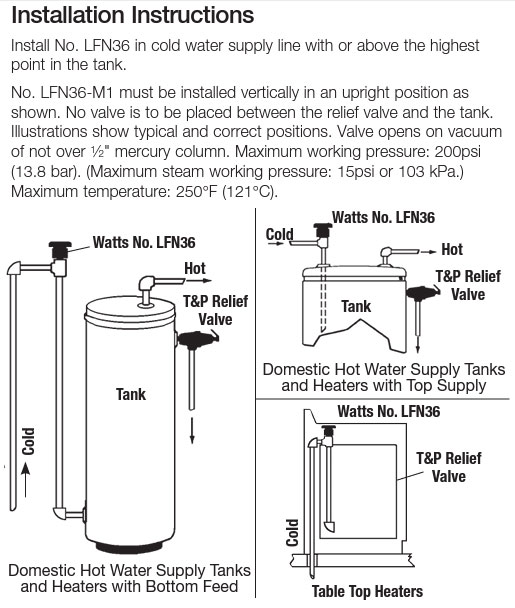CowSki
Handyman
Hi There,
I'm installing a new hot water tank. Vacuum breakers are a code requirement in my area (as are Pressure Reducing Valves). I wanted to add a thermal expansion tank. After much discussion/research I think it is best to put it on the cold water line. BUT if the vacuum breaker is between my hot water tank and my thermal expansion tank (on the cold water line) doesn't that render my expansion tank pretty much useless?!
Thanks Guys
I'm installing a new hot water tank. Vacuum breakers are a code requirement in my area (as are Pressure Reducing Valves). I wanted to add a thermal expansion tank. After much discussion/research I think it is best to put it on the cold water line. BUT if the vacuum breaker is between my hot water tank and my thermal expansion tank (on the cold water line) doesn't that render my expansion tank pretty much useless?!
Thanks Guys


